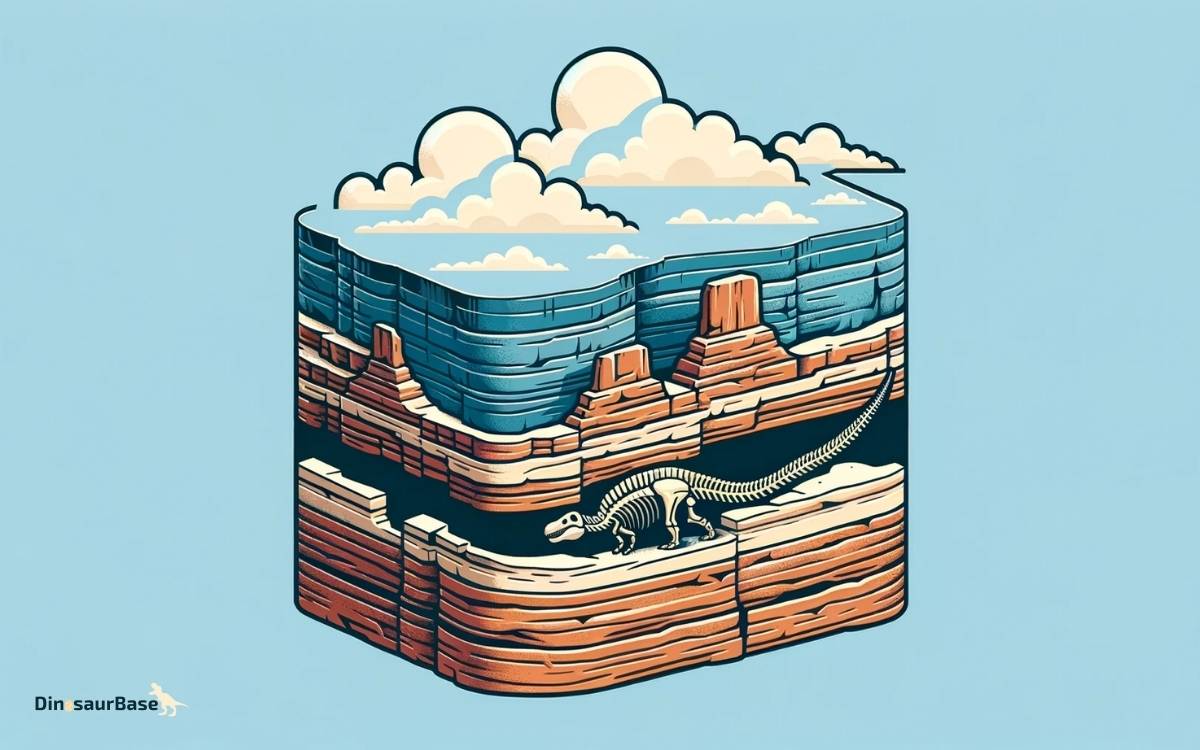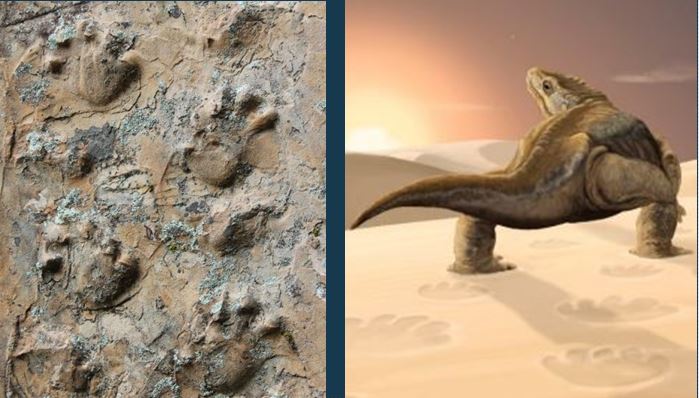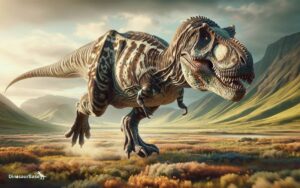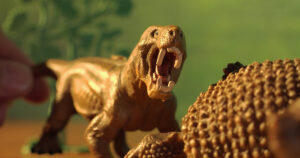Why Are There No Dinosaur Fossils in the Grand Canyon?
There are no dinosaur fossils in the Grand Canyon because the rocks are much older than the age of dinosaurs. The Canyon’s strata formed long before dinosaurs existed.
The Grand Canyon, a natural wonder, teems with geological history, yet it surprisingly lacks dinosaur fossils.
This absence is due to the age of the exposed rocks, dating back to the Precambrian to the Permian periods, which precede the reign of dinosaurs that emerged in the Mesozoic era.
Tourists and paleontologists alike witness layers of Earth’s ancient past but must look elsewhere to uncover the remains of the great beasts that roamed millions of years after these rocks solidified.
The Grand Canyon’s monumental cliffs and ledges offer a window into the deep past, but one that closes just before the chapter of the dinosaurs begins.
As such, the canyon lures scientists interested in earlier life forms and fans of earth sciences who seek knowledge about our planet’s developmental stages.

Unveiling Earth’s Past
Curiosity about our planet’s history takes us on exciting journeys. Unveiling Earth’s past isn’t just for scientists. It’s a thrilling quest for anyone.
The Grand Canyon is a window into an ancient world. Yet, something is missing. The age of dinosaurs doesn’t peek through this window. Let’s explore why dinosaur fossils remain absent from this majestic landscape.
A Brief History Of The Grand Canyon
The Grand Canyon’s history is deep and layered, like the rocks that form its walls. This natural wonder has evolved over millions of years.
Water carved the steep gorges. Winds and rain sculpted the towering cliffs. We see a timeline in the rock layers. They tell stories from millions of years ago.
- Formation began around 70 million years ago.
- Erosion shaped the landscape over time.
- The Colorado River cut through the plateau, exposing ancient rocks.
Rocks at the bottom are almost 2 billion years old. The top layers are younger. But they are still older than the dinosaurs. That’s a key reason why we find no dinosaur fossils here.
Dinosaurs: When Did They Roam?
Dinosaurs roamed Earth between 230 and 65 million years ago. This period includes the Triassic, Jurassic, and Cretaceous eras. It’s known as the Mesozoic Era. The Grand Canyon’s rocks are older than this era. They formed long before dinosaurs existed.
| Period | Years Ago |
|---|---|
| Triassic | 230-200 Million |
| Jurassic | 200-145 Million |
| Cretaceous | 145-65 Million |
Layers that could hold dinosaur fossils just aren’t present in the Grand Canyon. The rocks there are much older.
Most dinosaur remnants are in rocks from the later Mesozoic Era. That’s why the Grand Canyon keeps silent about the dinosaurs.

Credit: gephardtdaily.com
The Geological Timeline
The Grand Canyon, a breathtaking natural wonder, tells a story millions of years old. Peering into its depths is like reading the pages of a book written by Earth itself.
To understand why the remains of dinosaurs are absent, one must delve into the geological timeline that shaped this iconic landmark.
Strata And Sediment: The Grand Canyon’s Story
The Grand Canyon showcases distinct layers known as strata. Formed over 250 million years, these bands of rock reveal different geological periods. Let’s highlight the key layers:
- Vishnu Schist: The oldest, formed over 1 billion years ago.
- Redwall Limestone: Sea-deposited layers, around 340 million years old.
- Supai Group: Sediments from rivers and coastal plains, aged at 285 million years.
Each layer unveils the conditions of the Earth’s past.
Dinosaur Era Sediments: Missing In Action
The dinosaur era, known as the Mesozoic Era, ranged from 252 to 66 million years ago. Surprisingly, the Grand Canyon lacks sediment from this key historical chapter.
Here’s why:
- Erosional Gap: A significant erosional phase removed many sediment layers that could have contained dinosaur fossils. This gap is called an unconformity.
- Limited Mesozoic Rocks: The canyon has only a slim portion of Mesozoic rocks. They are mostly beyond the canyon’s north rim, out of the common visitor’s view.
The absence of these critical layers explains why dinosaurs left no trace in the Grand Canyon’s geological record.
Fossil Formation Factors
Understanding fossil formation factors is key to unraveling why some places, like the Grand Canyon, seem barren of dinosaur remains.
Fossilization is a rare event that depends on numerous conditions aligning perfectly. Let’s explore the ideal situations needed for fossils to form and why the Grand Canyon landscape doesn’t meet these criteria.
Ideal Conditions For Fossilization
To become a fossil, several factors must come together:
- Quick burial to protect remains from scavengers
- Layers of sediment to shield the body from natural elements
- Low oxygen environments to slow down decomposition
- Mineral-rich waters to replace organic material with rocks
- Millions of years under specific pressure and temperature
Only when these factors align do bones or imprints stand the test of time.
Why The Grand Canyon Falls Short
The Grand Canyon is a record of Earth’s history, but dinosaur fossils are notably absent. Here’s why:
- Age of rocks: Many rock layers in the canyon predate dinosaurs.
- Erosional forces: The constant scouring by the Colorado River removes soft fossil material.
- Lack of sediment cover: Exposed bedrock doesn’t trap and preserve bones.
- Predominant rock types: Sedimentary rocks ideal for fossilization are uncommon here.
- Tectonic activity: Uplift and erosion recycle the canyon’s layers, preventing fossil preservation.
In essence, the Grand Canyon’s environment does not meet the ideal conditions for fossilization.
Erosion And Its Impacts
The Grand Canyon, a spectacle of nature’s artistry, owes much of its form to erosion. The absence of dinosaur fossils in this massive canyon sparks curiosity. Erosion profoundly shapes the land, often erasing chapters of Earth’s history before our eyes.
The Relentless Force Of Water
Water carves landscapes relentlessly, shaping the earth over millions of years. The Colorado River, cutting through layers of rock, reveals Earth’s past. Yet, it also washes away fragile traces of ancient life.
Erosion Vs. Preservation At The Grand Canyon
At the Grand Canyon, erosion outpaces preservation. The rock layers visible today predate dinosaurs, their existence erased from the canyon’s story. Here’s why:
- Fossil Preservation requires precise conditions that are rare in environments like the Grand Canyon.
- Natural Forces such as wind and water continuously wear down rock surfaces, removing potential fossil evidence.
- Layer Exposure: The oldest layers date to times well before dinosaurs roamed the earth.
The Search For Dinosaur Remains
The Search for Dinosaur Remains sparks the imagination of scientists and adventurers alike. Movies and books often tell thrilling tales of dinosaur bone discoveries.
Yet, some places, like the Grand Canyon, seem to be lacking these ancient treasures. This begs the question, why?
Where To Find Dinosaur Fossils
Finding dinosaur fossils is a rare event. Scientists often search in places called sedimentary basins. These basins were once lakes, rivers, or swamps.
Dinosaurs lived, died, and became buried here long ago. Let’s explore where these remains are often found:
- Morrison Formation: A famous site in the western United States rich in Jurassic fossils.
- Hell Creek Formation: Known for the last dinosaurs before the mass extinction.
- Lance Formation: Another location in the western US with a variety of fossilized species.
Dinosaur remains require very specific conditions to become fossils. Scientists look for layers of rock known as stratigraphy that tell a story of ancient times. The Grand Canyon, while ancient, tells a different story.
Common Misconceptions About Fossils And The Grand Canyon
The Grand Canyon is steeped in geological and cultural history. Myths persist about dinosaur fossils here. Let’s debunk some common misconceptions:
| Misconception | Reality |
|---|---|
| All old rocks have fossils: | The rock layers in the Grand Canyon are mostly too old for dinosaur fossils. |
| The Grand Canyon exposes all eras of time: | It misses the time dinosaurs roamed the Earth by millions of years. |
| If you dig deeper, you’ll find dinosaurs: | Digging deeper gets you older rock, not the dinosaur-era layers. |
Dinosaurs lived between 230 million and 66 million years ago. The rock at the bottom of the Grand Canyon is much older than that. The layers from the dinosaur time just aren’t there.

Credit: www.nps.gov
Beyond The Grand Canyon
The Grand Canyon, with its majestic and awe-inspiring landscape, holds many geologic wonders. Yet, dinosaurs seem absent from this tableau.
This elicits curiosity about the surrounding regions. Do they house the fossils that the Canyon seems to withhold?
Fossils In Surrounding Areas
The land encircling the Grand Canyon tells a different story. Abundant with prehistoric remnants, these areas contrast sharply with the canyon’s fossil scarcity. Various sites nearby yield clues to Earth’s residents from different eras.
- Chinle Formation: Known for an array of Triassic fossils.
- Kaiparowits Plateau: Dinosaur fossils aplenty from the Late Cretaceous.
- Tuba City: Trackways reveal the prehistoric traffic that once roamed here.
The close proximity of these fossil-rich sites poses an intriguing question. Why do they contain such treasures while the Grand Canyon appears barren?
The Bigger Picture Of Paleontological Finds
Understanding the global distribution of fossils demands a broad perspective. Dinosaur remains are scattered across the world. This mosaic offers insights into the ancient past.
| Region | Period | Discoveries |
|---|---|---|
| Patagonia | Cretaceous | Massive Titanosaurs |
| Mongolia | Cretaceous | First Dinosaur Eggs |
| North America | Late Jurassic | Famed Allosaurus |
Each discovery enhances our understanding of the environmental conditions that allowed dinosaurs to thrive. The absence of dinosaurs in one place highlights their presence in another, enhancing the fabric of our planet’s rich history.
Frequently Asked Questions Of Why Are There No Dinosaur Fossils In The Grand Canyon?
Why Are There No Fossils In The Bottom Layer Of The Grand Canyon?
The bottom layer of the Grand Canyon, the Vishnu Schist, lacks fossils due to its extreme age and metamorphic nature, predating the existence of complex life on Earth.
What Type Of Fossils Do Not Exist In The Grand Canyon?
The Grand Canyon does not contain dinosaur fossils, as its rocks predate their existence.
Does The Grand Canyon Have Fossils?
Yes, the Grand Canyon contains diverse fossils including marine creatures, plants, and even traces of early reptiles, showcasing Earth’s historical life.
Which State Has No Land Dinosaur Fossils?
No land dinosaur fossils have been found in the state of Maryland. Research continues in the hope of uncovering such remains.
Conclusion
Unveiling the history of the Grand Canyon has been a journey into Earth’s deep past. The absence of dinosaur remains reveals the region’s ancient landscapes, predating these giants.
Geology tells a tale of time before our Jurassic favorites roamed, inviting us to explore deeper into the Earth’s layers and appreciate the forces shaping our planet.
Remember, the Grand Canyon is not devoid of history, but instead showcases a different chapter, one written long before the dinosaurs’ reign.




